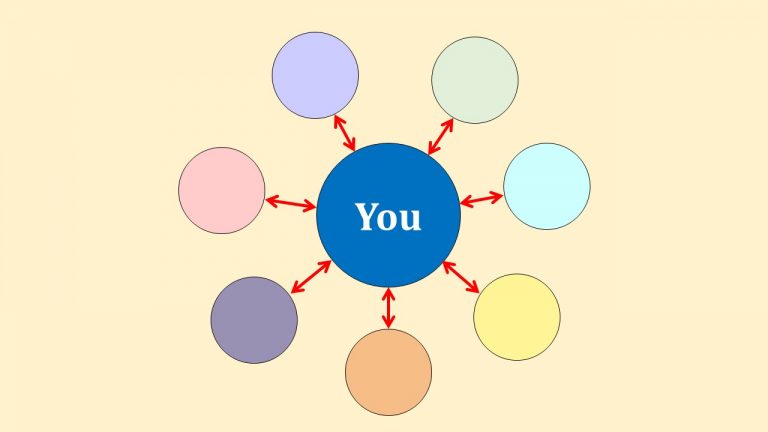Key Points:
- Work-Life Balance (WLB) has given way to the concept of Work-Life Integration (WLI). Each of us has to decide what that should look like in our own lives.
- A stronger sense of WLI is linked to less burnout and greater work satisfaction.
- As you seek balance, it is not just about how much time you spend, but also how involved you feel with a given activity, as well as how satisfying and fulfilling that activity feels.
- There are a number of steps you can follow to enhance WLI, including allowing for more spontaneity, asking for what you need, avoiding caregiver stress, communicating your concerns with colleagues, and promoting institutional changes.
Introduction
Whole Health is about striking balances, and one of them is between work and the other aspects of your life. How do you balance work (at home or elsewhere) with time for other pursuits? Is that even possible for clinicians, given our intense work demands, the risks associated with not doing our work well, and our strong commitment to serving others? This Whole Health tool offers different definitions of Work-Life Integration (WLI) and encourages you to decide how you want WLI to look in your life. It offers ideas for enhancing it, and provides resources for additional information.
Definitions
There is no such thing as work-life balance. Everything worth fighting for unbalances your life.[1]
Alain de Botton
Work-Life Balance (WLB) was the original term used as this concept first arose. WLB has been defined as …a comfortable state of equilibrium achieved between an employees primary priorities of their employment position and their private lifestyle. Most psychologists would agree that the demands of an employees career should not overwhelm the individuals ability to enjoy a satisfying personal life..[2]
There have been suggestions that viewing ones personal and professional well-being in terms of WLB actually may not be productive.[1]For many people, there is not a clear-cut distinction between work time and other types of time, especially since technology allows us to work from home, or while we are on vacation. Many peoples work does not involve leaving home to go to a job; child care, for example, can be work, but it blends in with other aspects of life. In discussing WLB, there may also be an implication that work is somehow less pleasant, or that it is something to try to scale back, but for some, this is not their priority. WLI and Work-Life Blend are the terms more frequently used in recent research on this topic. It has been argued that we can tell when we have integrated or blended our lives successfully because we will feel an overall sense of fulfillment.[3]
Why Work-Life Integration Matters
Regardless of the terminology used, WLI is important to our well-being. WLI influences clinician satisfaction and burnout risk.[4] In a 2012 study comparing WLB (to use the studys term) for physicians versus other members of the general population, participants were asked to rate their level of agreement with the statement, My work schedule leaves me enough time for my personal/family life.[4]Physicians, as one might expect, were more likely to answer no to that question.
Studies, focused mainly on work life versus family life, suggest that 3 different types of balance can come into play.[5]The 3 areas are:
- Time balancehow much time you spend on one aspect of life versus another.
- Involvement balancehow much you engage and participate in the different aspects of your life. How present are you?
- Satisfaction balancehow much different aspects of your life satisfy and fulfill you. It is not merely about the quantity of time you are available for various events and activities, but also the quality of the experience.
To explore more in depth how well the different aspects of your life are integrated, try the following exercise.

Mindful Awareness Moment
INTEGRATION AND BALANCE IN YOUR LIFE
Look at the diagram below. Imagine you are at the center, and there are numerous forces competing for your time, attention, and energy.
- What would those main competing forces be? Label the circles below with the names of those different forces.
- How much time and energy do those aspects of your life take from you, and how satisfying are they
- What would balance, or integration, among these forces look like?
- What can you do to make changes?
- Which areas give you the most joy? Which ones contribute to good health? How might they contribute even more?

Tips to Enhance Work-Life Integration
Here are some tips that may help as you try to navigate the tensions between different aspects of your life.
- Allow for spontaneity. As Wayne and Mary Sotile, two psychologists who work extensively with the challenges of medical marriages, put it, avoid the myth of a balanced life.[6]That ideal life looks different for each of us, and it shifts over time. The Sotiles describe finding balance as being akin to walking across a stream on slippery rocks; you must constantly adjust course.
- Do three important things every day. Regardless of how you spend a given day, be mindfully aware about doing the following:
- End the day feeling like you accomplished something.
- Find joy or fun in some aspect of the day.
- Each day, connect with a family member or colleague in a positive way.
- Do not get caught up in the delayed gratificationtrap. Many clinicians spend years in training, and it is easy to become trapped in the mindset of having an until that you must reach before you commit to balancing your life. Examples:
- I cant start exercising again until I complete my education.
- I cant spend more time with friends until after I get that promotion.
- I will take more time to relax after I have finished this paper/raised the kids/retired.
- Try to be aware of such thought patterns, and if possible, do not let them limit your ability to find a better balance.
- Do not misuse your endurance superpowers. Clinicians are extremely skilled at coping in ways that other people cannot. When it comes to WLI, being stoic does not pay. Talk to non-medical friends and family members. Do they think you are balanced? What do your partner and/or kids have to say about how balanced you are? Are you investing most of your time and energy enduring an unsatisfactory situation? Why?Just because you can do something, such as emailing colleagues late in the evening or attending early or late meetings, does not meant that it is the best idea in terms of setting standards for people you supervise or for your self-care.
- Talk about your experienceswith others. Do this both at work and at home. In medicine, there is often a conspiracy of silence.[6]Everyone operates on unspoken assumptions, such as the best person is the one who comes in earliest and stays latest. Discussing concerns, thought patterns, and observations takes courage, but it can help people to let misguided assumptions go. If people are caught up in dysfunctional work patterns, discussing them increases the odds that they can be changed for the better.
- Do not take on the caregiver role at home, at least not excessively. Many clinicians were drawn to health care because they are innately good at taking care of others. While parenting, partnership, and having aging parents require a certain amount of caregiving, it is important to drop out of the caregiver role outside of work if possible, at least from time to time. Caregiver stress is linked to many health problems and other challenges.[7]The first step is, in the spirit of mindful awareness, to decide what kind of support you. Ask your loved ones to help you receive it. You can give more to others if you are receiving some yourself.
- Advocate for institutional changesthat are supportive of WLI. For example, the Mayo Clinic created a program to promote WLI among employees in their Department of Medicine.[8]Specifically, a work group was formed of two senior faculty with professional development expertise, a senior practice administrator, and two faculty with expertise in clinician health and well-being. The group provided their colleagues with a list of characteristics known to promote satisfaction and WLI. These included the following:
- Do meaningful work. Bring your best effort into work each day, as able. For health care workers, this means ending the day with a strong sense of having served.
- Seek challenges that you are interested in and that you can realistically overcome.
- Invest in professional development. Keep learning. Seek out mentors and role models who can effectively model WLI.
- Contribute to a work culture that values and encourages a fulfilling life outside of work. Development of WLI skills can be supported by additional training in the form of continuing education activities, in-service trainings, and grand rounds teaching, for example. Leadership buy-in can be extremely helpful.
For more information on how to create an effective and balance-promoting (as well as burnout-preventing) workplace, refer to Burnout and Resilience: Frequently Asked Questions.
Resources
WORK-LIFE INTEGRATION IN MEDICINE
- Lipsenthal, L.Finding Balance in a Medical Life.San Anselmo, CA: Finding Balance, Inc.;
- Lipsenthal, L.Enjoy Every Sandwich: Living Each Day as If It Were Your Last. New York: Crown Archetype; 2011. (Dr. Lipsenthal wrote this book shortly before his death from colon cancer.)
- Sotile WM and Sotile MO.The Medical Marriage: Sustaining Healthy Relationships for Physicians and Their Families. Chicago, IL: American Medical Association; 2000.
WORK-LIFE INTEGRATION MORE GENERALLY
- Betz A, Kimsey-House K. Integration: The Power of Being Co-Active in Work and Life. Winchester, UK: Change Makers Books; 2015.
- Drago RW. Striking a Balance: Work, Family, Life.Boston, MA: Dollars & Sense; 2007.
- James, N. Work Life Balance is a Myth: How to Achieve Work Life Integration.https://www.life-is-a-game.org/neenjames/WorkLife_Integration_eBook.pdf. Accessed January 5, 2018.
- Johnston RK, Smith JW. Life Is Not Work, Work Is Not Life: Simple Reminders for Finding Balance in a 24/7 World. Berkeley, CA: Wildcat Canyon Press; 2001.
- Kelly M.Off Balance: Getting Beyond the Work-Life Balance Myth to Personal and Professional Satisfaction.New York, NY: Avery, an imprint of Penguin Random House; 2011.
- Molloy A.Stop Living Your Job, Start Living Your Life: 85 Simple Strategies to Achieve Work/Life Balance.Berkeley, CA: Ulysses Press; 2005.
- Sunnarborg MT, Wallace B, Frick E. 21 Keys to Work/Life Balance: Unlock Your Full Potential. Michael Thomas Sunnarborg; 2013.
Author(s)
Work-Life Integration: Tips and Resources was written by J. Adam Rindfleisch, MPhil, MD, (2014, updated 2018).



















